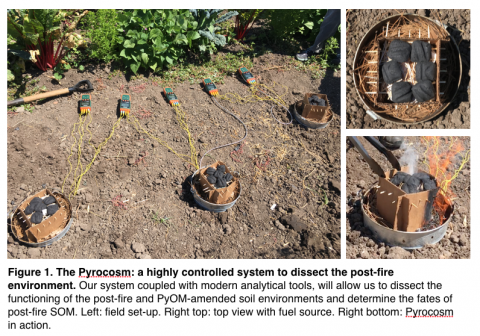Over the past two centuries humans have placed an unprecedented demand on the Earth’s natural resources. As a result of these pressures, we have witnessed an accelerated loss of biodiversity and a dramatic alteration of ecological patterns and processes. These changes have potentially devastating consequences on the long-term.
One major consequence of these demands, resulting from decades of long-term fire suppression strategies, is the increased frequency and breadth of high severity wild fires across our planet. These wildfires have a significant impact on soil carbon stocks, transforming soil organic carbon into pyrolyzed carbon via combustion. These pyrolyzed carbon compounds are chemically heterogeneous, determined by the initial substrates and the temperature at which it is transformed, and much of it is highly aromatic and extremely recalcitrant. These carbon compounds constitute approximately 80% if total soil organic carbon in fire-effected ecosystems. However, this trapped carbon can be emancipated by pyrophilous microbes! I aim to elucidate how these fire-adapted microbes respond to and transform pyrolyzed carbon substrates in post-fire soils using a combination of 16s sequencing and community profiling, transcriptomics and metabolomics with bacteria isolated from post-fire soils from Pyrocosms (Fig1. Developed in Dr. Tom Bruns' lab, an experimentally tractable system used to mimic wild fire conditions with defined soil and fuel sources to generate pyrolyzed soils and monitor succession) and field sites.

